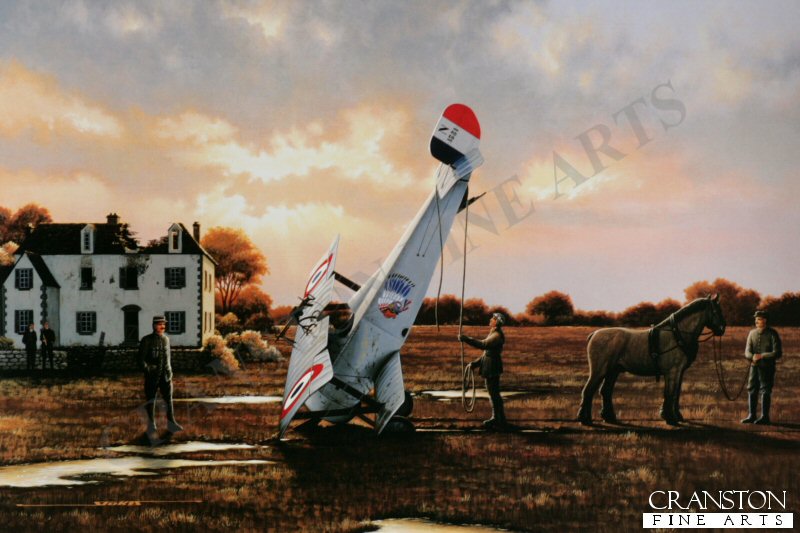- Sku:
- Vendor: Military Aviation Art Prints
Stuck in the Mud by Stan Stokes.
The Lafayette Escadrille was a French air service squadron which was manned by American volunteers during WW I. Thirty-eight Americans served with the squadron during the war. Nine were killed in action and one was accidentally killed in a fall from a horse. The squadron had four French officers, and only one, Captain Georges Thenault, survived the war. The Lafayette Escadrille accounted for a total of thirty-eight victories during its service. Nearly half of these victories were accounted for by Raoul Lufbery. Born in France, Lufbery was a soldier of fortune, having joined the U.S. Army and barnstormed in the Orient. Lufbery joined the aviation service initially as a mechanic but was attached to the Lafayette Escadrille because of his prior service with the U.S. Army. Lufbery achieved 17 confirmed victories, and prior to his being killed in action in 1918, he gave instruction to some of Americas top aces of the war, including Eddie Rickenbacker. The Lafayette Escadrille used a Seminole Indian insignia until April 1917, and a Sioux Indian insignia thereafter. The squadron initially flew the famous Nieuport fighting scouts, and was equipped with the heavier and stronger Spad later in the conflict. Many of the pilots preferred to fly the Nieuport because of its tremendous maneuverability. The Nieuport 17 was one of the most distinctive single-seat fighters of the War. This French-built aircraft was utilized by British, Belgian, Italian, American, and Russian airmen. Two of the most famous British aces, Billy Bishop and Albert Ball, flew Nieuports for much of their service. The design of the Nieuport is attributed to Franz Schneider who had suggested that a good compromise between a monoplane and a biplane would be a design utilizing a large upper wing and a much smaller lower wing. The resulting aircraft was much stronger than the early monoplane designs which suffered from frequent structural failures. The Nieuport 17 was initially powered by a 130 HP Clerget or a smaller 110 HP Le Rhone engine. The Nieuport 17 entered service in May 1916. Its performance at that time was superior to any fighting aircraft. It was about 10 percent faster than any other aircraft in service and could climb to 10,000 feet in approximately ten minutes. The Germans thought enough of this aircraft that they produced an improved copy of the 13-metre Nieuport Type-11 Baby. Aviation artist Stan Stokes, in his outstanding painting entitled Stuck in the Mud, shows a Nieuport of the Lafayette Escadrille in the process of being extricated from the mud following an aborted takeoff. The Lafayette Escadrille was absorbed into the 103rd Aero Squadron USAS in 1918 with Americas official entry into the War.
Supplied with signed and numbered certificate of authenticity.
Signed limited edition of 4750 prints.
Print size 16 inches x 11.5 inches (41cm x 30cm)
Have a question?

Stuck in the Mud by Stan Stokes.


